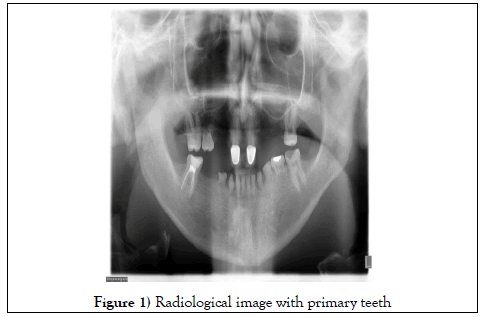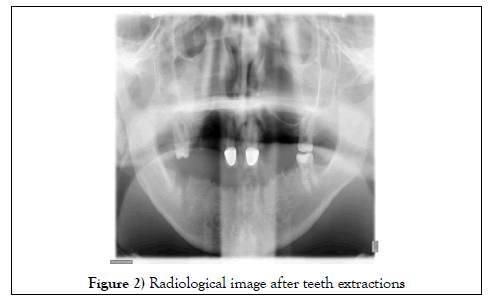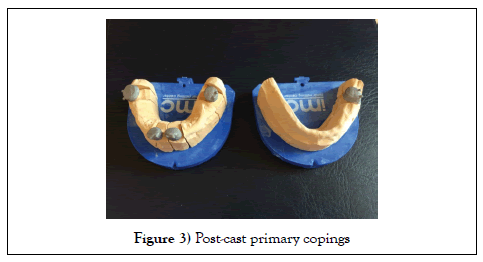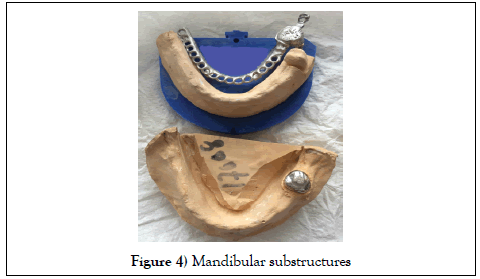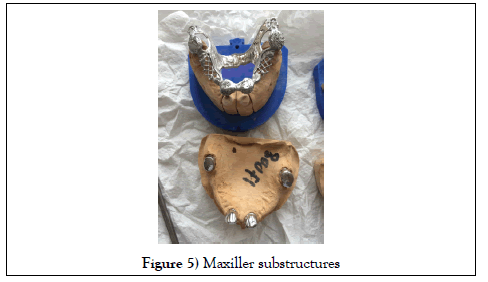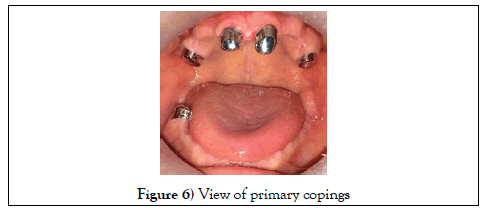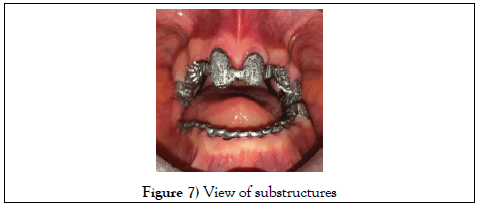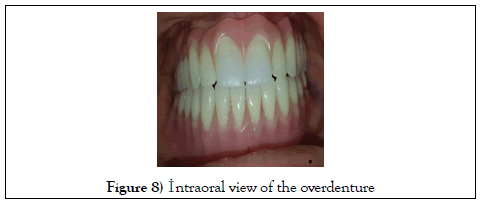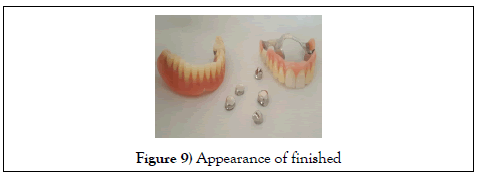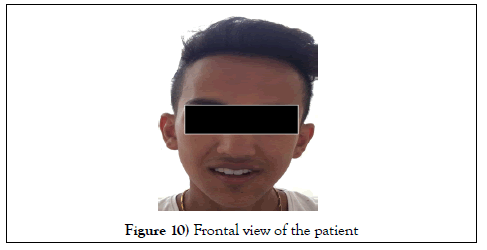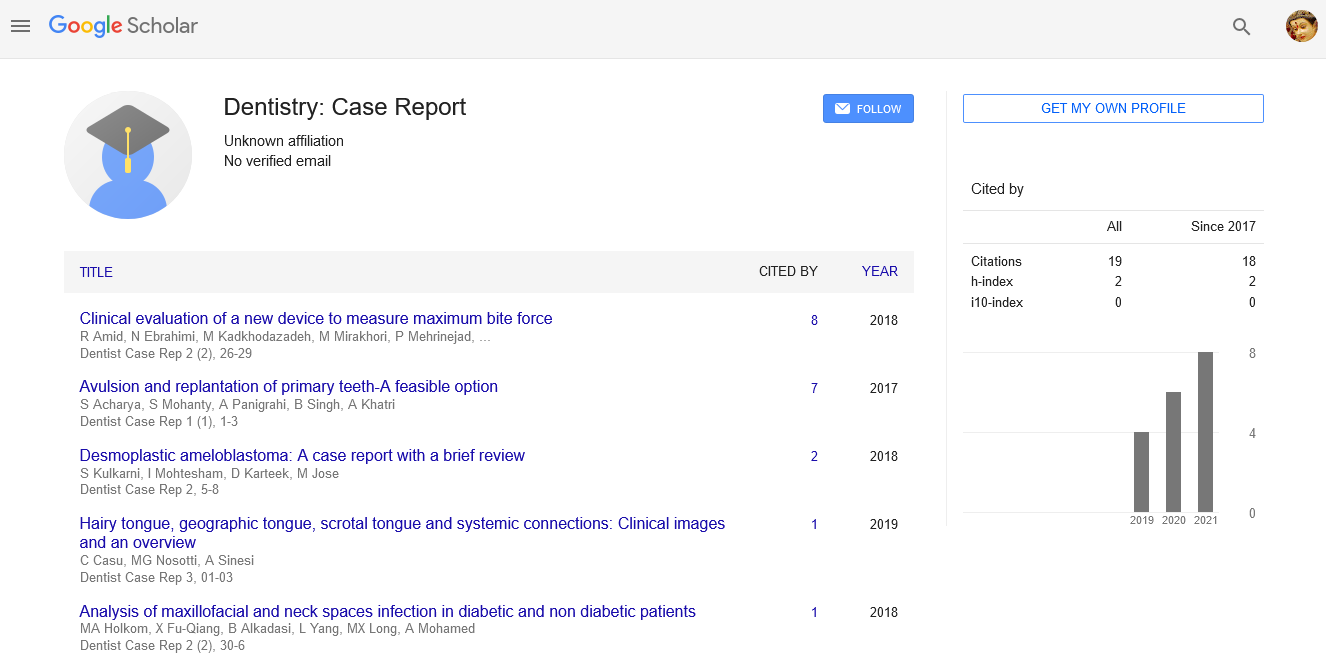Prosthetic Treatment of a Patient with Non-syndromic Oligodontia
Received: 05-Feb-2018 Accepted Date: Mar 12, 2018; Published: 22-Mar-2018
Citation: Fernandez CCA , Janini ME , Maia LC . Prosthetic Treatment of a Patient with Non - syndromic Oligodontia. Dentist Case Rep 2018;2(2):23 - 5.
This open-access article is distributed under the terms of the Creative Commons Attribution Non-Commercial License (CC BY-NC) (http://creativecommons.org/licenses/by-nc/4.0/), which permits reuse, distribution and reproduction of the article, provided that the original work is properly cited and the reuse is restricted to noncommercial purposes. For commercial reuse, contact reprints@pulsus.com
Abstract
Statement of the Problem: Oligodontia is the congenitally absence of six teeth or more, excluding third molars. For the prosthetic treatment planning; patient’s age, expectation of treatment of the patient, the condition of retained primary teeth, the number of missing teeth should be taken into account.
Case Presentation: A case of oligodontia treated with prosthetic rehabilitation is presented in this article. Clinical and radiological examinations of the patient were performed. It was seen that permanent dental germs did not develop outside the upper central and lower-upper 2. molar teeth. Prosthetic treatment was done with overdenture prostheses.
Results: The patient’s talk, articulation and masticatory function advanced greatly. He was also pleased with better facial esthetics. Conclusion: Prosthetic treatment is important in terms of improving the patient’s chewing and speaking functions and the temporomandibular joint health in the cases of oligodontia.
Keywords
Oligodontia; Overdenture; Conventional treatment
Introduction
Hypodontia is defined as the developmental failure of one or more teeth, while congenital deficiency of six or more teeth other than the third molars is called oligodontia or severe hypodontia [1]. Besides an unfavorable vertical dimension, patients with missing teeth may suffer from, reduced chewing ability and pronunciation problems. Thus, early diagnosis and treatment of these patients is important.
Correction of this abnormality aims for complete esthetic and functional rehabilitation takes an interdisciplinary approach, including various prosthetic, orthodontic, and surgical treatments.
Generally, the lack of uniformity of the occclusal plane, super-eruption, loss of vertical dimension, and bone morphology in edentulous areas may cause prosthodontic challenges [2,3].
In the cases of oligodontia, it should be also evaluated for possible abnormalities of other teeth. For the success treatment planning should be like; patient’s age, expectation the treatment of the patient, the condition of retained primary teeth, the number of missing teeth should be taken into account [4].
The prosthetic treatments include implants, removable prostheses, and fixed dentures. Removable partial denture and over denture are relatively simple and rapid methods and can also be used in several cases where oral and maxillofacial surgery is not feasible.
This case report illustrates the value of removable prosthodontic procedures as one approach to fulfilling the requirements of esthetic rehabilitation for a young oligodontia patient.
Case Report
A 21-year-old male patient admitted to our clinic due to malnutrition and aesthetic problems with loss of teeth. Patient wanted to complete the treatment quickly with low cost to stay for short time in TURKEY, after going back to abroad.
We have learned with anamnesis, there is no systemic discomfort. He have lived with primary teeth for years and lost a lot of teeth before admitting to our clinic. As a result of extraoral examination did not found any abnormalities except for depressions in the middle facial area. Intraoral and radiological examinations showed that permanent dental germs were not developed except the upper central incisor teeth and the upper- lower 1st molar teeth (Figures 1 and 2).
It has been learned that the lower persistent primary teeth and the lower right 1st molar tooth were extracted two months earlier. The patient’s teeth 16,11,21,26,36 had no periodontal problems or carries. Among the teeth numbered 11-21, diastema was observed. It was seen that there was a crest height and width at the adequate level in toothless areas. No problems were found in soft tissues and mucosa.
It was detected that except the 3rd molar teeth, 22 permanent tooth germ hadn’t developed. Oligodontia diagnosis was made. No tests have been performed to assess whether an underlying genetic factor such as ectodermal dysplasia; but no physical abnormality were found in hair, nails, skin, eyes. The patient’s neuromotor development was appeared to be normal and there was no specific finding on physical examination to suggest any syndrome. Any abnormality were not found in congenital or subsequently in the ectodermal tissues and other systems except for the missing teeth. Dental treatment has been focused on because the criteria for the diagnosis of ectodermal dysplasia has not been found in our patient.
Patient is told with all the details of implant treatment and necessity, but the patient is preferred to make overdenture prostheses because of economic reasons and time problems. Overdenture prosthesis has been preferred in order to meet the aesthetic expectations of our young patient, provide soft tissue support and correct the profile to use it for long term. The patient was informed about the treatment so that the treatment can be started.
The first impressions were taken with alginate impression material (Cavex CA37, Haarlem, The Netherlands). On the models individual impression trays were prepared by using the self-curing acrylic resin (Imicryl, Konya, Turkey). Existing teeth were prepared in a knife edge style and after a week the temporary crowns were formed. Second impressions were taken from the patient using polyether impression material (Impregum Monophase, 3M ESPE, Seefeld, Germany) followed by edge shaping using individual tray and green stench. Afterwards, vertical dimension measurements were made by using Niswonger method with base and wax template. İmpressions and templates were sent to the technician after controlling the speaking interval with Silverman method. The alignment of the primer copings and casting substructures was prepared by the technician and was checked in the mouth (Figures 3-7).
Function and phonation controls of the prosthesis were made after the arrangement of artificial teeth and the prosthesis was finished with the patient’s aesthetic expectations in mind (Figure 8-10).
Regular oral hygiene is important. That’s why oral hygiene training has been given to this patient with so many follow-up. The patient’s oral hygiene training was supportive, both tooth and prosthesis maintenance and cleaning was explained. In addition, fluoride applications to the intaglio surface of the denture were advised. Six month oral hygiene return visits were scheduled to maintain and reinforce homecare performance as well as to assess the need to reline, rebase, or remake prosthesis.
Discussion
Many factors play a role in the etiology of congenital tooth deficiencies. Among these are genetic factors first. However, many factors such as intrauterine diseases, infectious diseases, drug use, environmental factors, radiotherapy application, trauma are mentioned [5,6].
Oligodontia is most commonly associated with ectodermal dysplasia and Down syndrome. In syndrome-related diseases, physical abnormality may be seen in the appearance of the ear, eye, and skin organs of the patient. It is important to physically assess the patient in detail to distinguish whether oligodontia is “isolated” or “syndrome related. The clinical features of oligodontia include six or more missing teeth, lack of development of maxillary and mandibular alveolar bone height and reduced lower facial height. Diversity in teeth morphology may also observed along with problems in teeth development and eruption. The presence of diastemas, persistence of primary teeth, delayed eruption of teeth and alveolar bone hypotrophy all suggest a diagnosis of oligodontia. Panoramic radiography as a radiological diagnostic method is an useful method to diagnose congenital tooth deficiency and researchers recommend panoramic radiography to be used to help diagnosis for in patients with missing teeth [7].
Patients suffering from oligodontia may have severe psychological, esthetic, and functional problems [8]. Thus, early diagnosis and treatment of these patients are necessary.
The prosthetic treatments include implants, removable prostheses, fixed dentures, and adhesive techniques [9].
Bone augmentation and orthognathic surgery may be necessary when evaluating alveolar bone level and jaw associations, but these treatments are both difficult and long term.
If the individual’s growth development is complete and healthy alveolar bone is present, the implant option also comes to the forefront.
Patients with oligodontia should be treated within the framework of a multidisciplinary approach, taking into consideration the options of orthodontic, restorative, surgical and prosthetic treatment. The treatment planning should take into account the socioeconomic status of the patient, the expectations, the age, the teeth in the mouth, the general condition of the teeth and oral hygiene [10,11]. Removable partial denture and overdenture are relatively simple solutions and can also be preferred in difficult cases where oral and maxillofacial surgery is not suitable. An overdenture that covers the alveolar arch and is partly supported by natural teeth is a satisfactory method in treating patients with oligodontia. Overdenture treatment choice is simple as well as reversible. This treatment option can provide means for restoring ideal occlusion, increasing the vertical dimension and improving the self reliance of those patients. The use of overdenture has the advantages of providing dental support against prosthetic occlusal forces, protecting the alveolar bone around the teeth, and preserving the sense of proprioception at periodontal receptors. In addition to these, the lip which lost the supports due to the lack of teeth is also returned. The restored face profile also increases the confidence of the patient [12]. On the other hand, the overdentures cover the teeth as well as the gingival margins. This will isolate the supporting teeth from normal salivary contact, which aids in remineralization. This can potentially increase caries rate, gingivitis as well as periodontal breakdown [13,14]. In this case, the periodic recalls every 3–4 months are recommend monitoring oral hygiene and dental caries. Improvement of aesthetic, enhancement of function and phonation, psychological and social satisfaction is very important for the patients who are suffering from tooth deficiency at a young age. The longevity of the treatment with these should also be taken into consideration and patients should be treated with prosthetic treatment as early as possible.
Conclusion
In the prosthetic treatment of individuals with oligodontia the dental, occlusal, periodontal and oral clinical characteristics should be considered with continuing support and conservation of proper maxillofacial relationships.
Acknowledgements
Special thanks to Gulnur Kaplan, Cumhuriyet University, for his invaluable contribution in preparing this manuscript for submission.
Funding
None.
Ethical Approval
Ethical approval for the original data collection was granted by the South East Wales Local Research Ethics Committee
REFERENCES
- Dhanrajani PJ, Hypodontia: Etiology, clinical features, and manage- ment. Quintessence Int 2002;33:294-302.
- Becelli R, Morello R, Renzi G, et al. Treatment of oligodontia with endo- osseous fixtures: Experience in eight consecutive patients at the end of dental growth. J Craniofac Surg 2007;18:1327-1330.
- McNamara C, Foley T, McNamara CM. Multidisplinary management of hypodontia in adolescents: Case report. J Can Dent Assoc, 2006;72.
- Esposito SJ, Cowper TR. Overdentures in partial anodontia: Simple solutions for complex problems. Compendium 1991;12:172-174.
- Muretic Z, Magdalenic-Mestrovic M, Zarkovic D. An interdisciplinary approach to the treatment of oligodontia. Acta Stomatol Croat, 2001:35;117-120.
- Hu JC, Simmer JP. Developmental biology and genetics of dental malformations. Orthod Craniofac Res, 2007:10;45-52.
- Avcu N, Buyukkopru D, Kansu O, et al. Severe hypodontia and asymptomatic bilaterally ectopic impacted teeth in the coronoid processes: A case report. Quintessence Int, 2004:35;582-583.
- Hummel P, Guddack S. Psychosocial stress and adaptive functioning in children and adolescents suffering from hypohidrotic ectodermal dysplasia. Pediatr Dermatol, 1997;14:180-185.
- Murdia N, Kattimani PT, Mete JJ. Prosthetic rehabilitation of patient with oligodontia: A case report. Medical Science, 2014;4:494-496.
- Akkaya N, Alpaslan S, Kanlı A. Oligodontia: A case report. The Journal of Hacettepe, 2006;30:31-34.
- Akkaya N, Kiremitci A, Kansu O. Treatment of a patient with oligodontia: A case report. JCDP, 2008;9:121-127.
- Tylman SD, Malone WFP. Tylman’s theory and practice of fixed prosthodontics, 7th Ed., The C.V. Mosby Co., St. Louis, 1978.
- Toolson LB, Smith DE. A 2-year longitudinal study of overdenture patients. Part I: Incidence and control of caries on overdenture abutments. J Prosthet Dent, 1978;40: 486-491.
- Renner RP, Gomes BC, Shakun ML, et al. Four-year longitudinal study of the periodontal health status of overdenture patients. J. Prosthet. Dent, 1984;51:593-598.



